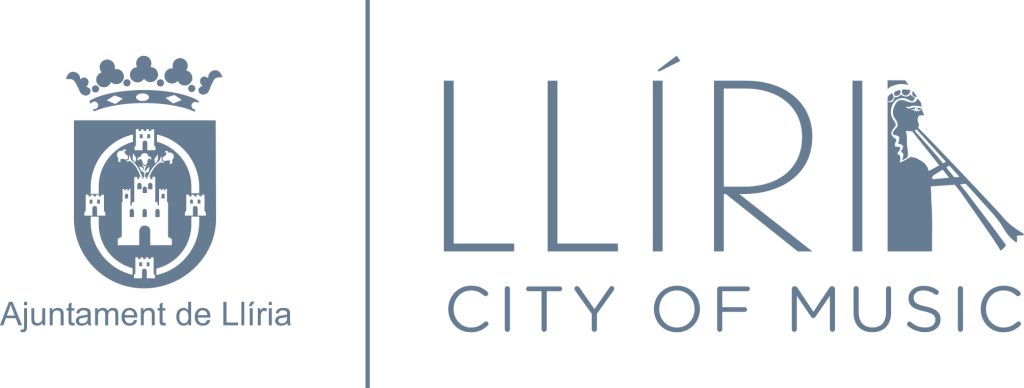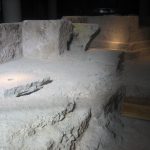These are the ten collaborating orchestras of the First Prize and the five of the AESDO Special Award
The 1st “Llíria City of Music” International Orchestra Conducting Competition has become a unique competition to be in the search of the best young baton in Europe. The reason is that the first prize not only has a financial endowment, but it will give the winner the opportunity to sign a contract with the ten best professional orchestras in Spain.
This fact allows the winner to get a space, a unique platform for projection and visibility, and, in addition, the possibility of becoming known by prominent personalities from the professional world of conducting, such as chief conductors, orchestra managers, managers or music critics.
The 10 collaborating orchestras in the competition are: Spanish National Orchestra, RTVE Symphony Orchestra, Valencia Orchestra, Castilla y León Symphony Orchestra, Málaga Philharmonic, Granada City Orchestra, Symphony Orchestra of the Region of Murcia, Oviedo Filarmonía, Extremadura Symphony Orchestra and Seville Royal Symphony Orchestra.
In addition, there will be a special AESDO (Spanish Association of Orchestra Conductors) award for the highest-ranked member. Apart from the award, the winner may also be invited to conduct the FSMCV Youth Symphony Orchestra, Harmonie-Ensemble, ESMAR Orchestra, Extremadura Youth Orchestra or the Youth Orchestra of the Region of Murcia.
The 10 collaborating orchestras of the competition
Spanish National Orchestra (ONE). Part of the Ministry of Culture and Sports, the orchestra has its seat in the National Music Auditorium, but it offers concerts throughout Spain and abroad with the aim of spreading Spanish music and culture.
Among its activities are the Symphonic Cycle, the Satellites Cycle, as well as a socio-educational project that aims to promote classical music from different perspectives.
Its chief conductor and artistic director is David Afkham and the technical director, Félix Palomero.
RTVE Symphony Orchestra.
Created in 1965 by Igor Markevitch, it is one of the youngest orchestras on European radio and television. It is the only symphonic and choral institution that performs an intrinsic audio-visual feature, since everything it performs is broadcast through RTVE.
Its presence is common on the soundtracks of TVE series and national and international films, as well as in many Spanish festivals and in international cities, within their concert tours.
Among its batons stand out Antoni Ros-Marbà, Enrique García Asensio, Miguel Ángel Gómez Martínez, among others. At present its chief conductor is Pablo González.
Valencia Orchestra. The group was created in 1943 with Joan Lamote de Grignon as its first conductor. Having its seat at the Palau de la Música, it has developed a long musical activity with concerts throughout Spain, Italy, Turkey, Germany, Austria and the Czech Republic.
Among its regular conductors are J. Iturbi, E. García Asensio, Manuel Galduf, Miguel Ángel Gómez Martínez and Yaron Traub.
Castilla y León Symphony Orchestra. The Regional Government of Castilla y León created the orchestra in 1991 and, since then, it has offered numerous concerts, premieres and recordings.
It has its seat at the Miguel Delibes Cultural Center in Valladolid, and it has had conductors such as Max Bragado-Darman, Alejandro Posada, Lionel Bringuier and Andrew Gourlay. In addition, since 2016, the orchestra has the Israeli Eliahu Inbal as its main guest conductor.
Málaga Philharmonic. It was born in 1991 thanks to a consortium between the City Council and the Regional Government of Andalucía, out of the conviction that the city needed to have a formation. In addition to programming concerts, they make recordings and special projects.
Its chief conductor and artistic director is José María Moreno; preceded by Octav Calleya, Odón Alonso, Alexander Rahbari, Aldo Ceccato, Edmon Colomer and Manuel Hernández Silva.
It owns the Malaga award, the Distinction of Honour from the Malaga Provincial Council or the Andalusian Flag of the Arts.
Granada City Orchestra. It relies on the institutional participation of the Granada Consortium for Music, made up of the Granada City Council, the Andalusian Government, and the Granada Provincial Council.
It was created in 1990, with Juan de Udaeta as conductor; a position also occupied by Josep Pons, Jean-Jacques Kantorow, Salvador Mas, Andrea Marcon, and the current Lucas Macías.
The orchestra has given concerts in the main theatres and festivals of the Spanish geography and internationally: Scala in Milan, Gstaad Festival (Switzerland) or the International Music Festival of Coimbra (Portugal).
They have been distinguished with the Medal of Honour from the Royal Academy of Fine Arts of Granada, the “Manuel de Falla” Award, or the 2015 Andalusian Flag.
Symphony Orchestra of the Region of Murcia. It emerged in 2002 and currently has a steady staff of 49 teachers led by Virginia Martínez.
In its years of history, it has had the following regular conductors: José Miguel Rodilla, Enrique García Asensio, Alezander Vedernikov, Leo Brouwer, Jesús Amigo, Marcus Bosch and Pavel Baleff.
Annually, it carries out a cycle of Symphonic Subscription, school concerts, family concerts and actively participates in the Great Concerts and Dance cycles of the Víctor Villegas Auditorium in Murcia.
Oviedo Filarmonía. It got presented on February 6, 1999, under the name Oviedo City Symphony Orchestra, as an initiative of the Oviedo City Council to cover artistic needs in the different spaces of the city.
Since then, it has been a group involved in the social fabric of the city, with the aim of bringing cultured music closer to citizens. They hold concerts for children, summer concerts with popular programming or soundtrack concerts. But mainly, the Filarmonía is responsible for the Festival of Spanish Lyric Theatre.
Until 2011, its chief conductor was Friedrich Haider. At present, its chief conductor is Lucas Macías and the main guest director, Iván López-Reynoso.
Extremadura Symphony Orchestra. The Regional Government of Extremadura created the orchestra in 2000, as an instrument for the dissemination of musical culture in the region. It usually offers educational concerts for schoolchildren, family concerts, new audiences, or chamber cycles, as well as extraordinary concerts with a social purpose.
The orchestra has performed in the main national auditoriums, under batons such as those of Carlos Kalmar, José Ramón Encinar, Antoni Ros Marbá, Enrique García Asensio, Christopher Wilkins and Martin Sieghart.
Its chief conductors have been Jesús Amigo, Álvaro Albiach and, from next season, it will be Andrés Salado.
Seville Royal Symphony Orchestra. Founded in 1990, it was born by the decision of the Regional Government of Andalucía and the Seville City Council, together with 50% -owned entities; with Croatian Vjekoslav Šutej as first artistic director and chief conductor.
Thanks to their work, there has been an increase in the number of symphonic concerts in the city, both for the general audience and for the school public.
Its artistic directors and chief directors have been Klaus Weise, Alain Lombard, Pedro Halffter and John Axelrod.


















